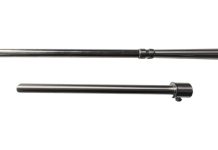Low volume manufacturing involves making small quantities of something. Prototypes and initial production runs of new products are often made this way. Low volume manufacturing aims to make a small number of high-quality products quickly and efficiently. Businesses that want to test their products before mass production often choose low volume manufacturing. If you want to learn about CNC machined metal prototypes, click on the link. Let’s look at some types of low volume manufacturing to get a better idea.
Low volume manufacturing types
The major types of low volume manufacturing are 3D printing, injection molding, and CNC machining. But CNC machining is most widely used and loved by many business tycons. Low volume manufacturing uses 3D printing because it’s quick and cost-effective for prototyping. Plastic parts are best produced with injection molding, another low-volume manufacturing option. CNC machining involves cutting material to make a product. Now, look at the advantages and benefits of low-volume manufacturing.
Low-volume manufacturing advantages
Manufacturing low volume has several advantages over other types of manufacturing. Speed is the first advantage. Businesses can test their products faster and bring them to market faster with low volume manufacturing. Second, it’s cost-effective. Small businesses and startups can benefit from low volume manufacturing because it’s cheaper. Low volume manufacturing helps businesses reduce waste and improve their environmental impact by producing what’s needed. Let’s look at rapid prototyping.
Rapid prototyping
Rapid prototyping involves making a physical prototype of a product quickly. Low volume manufacturing often uses this process to test and validate product designs. Rapid prototyping can be done with 3D printing, CNC machining, or injection molding. Rapid prototyping allows businesses to test and refine their product designs before mass production. What considerations should you keep in mind for low volume manufacturing? Continue reading to learn more.
Low volume manufacturing considerations
When choosing a low volume manufacturing process, businesses should consider several things. You must be aware of some of the things. The first thing to consider is the size and complexity of the product. It’s better to use some low-volume manufacturing processes for producing small and simple products, while others can handle bigger and more complex ones. The second thing to consider is the material. Different manufacturing processes are better for different materials, so choose one that can handle the material you need. The cost and timeline of the manufacturing process should also be considered. Low volume manufacturing may be more expensive or take longer.
Final thoughts
All in all, rapid prototyping is an excellent technique for making molds and designs. Businesses that need to quickly and efficiently make small quantities of high-quality products choose low volume manufacturing. Low-volume manufacturing processes include 3D printing, injection molding, and CNC machining. Low-volume manufacturing relies on rapid prototyping to test and refine product designs. Consider the size and complexity of the product, the material used for the product, and the cost and timeline of the manufacturing process when choosing a low volume manufacturing process. Low volume manufacturing is a great tool for businesses looking to test their products and get them to market quickly.













